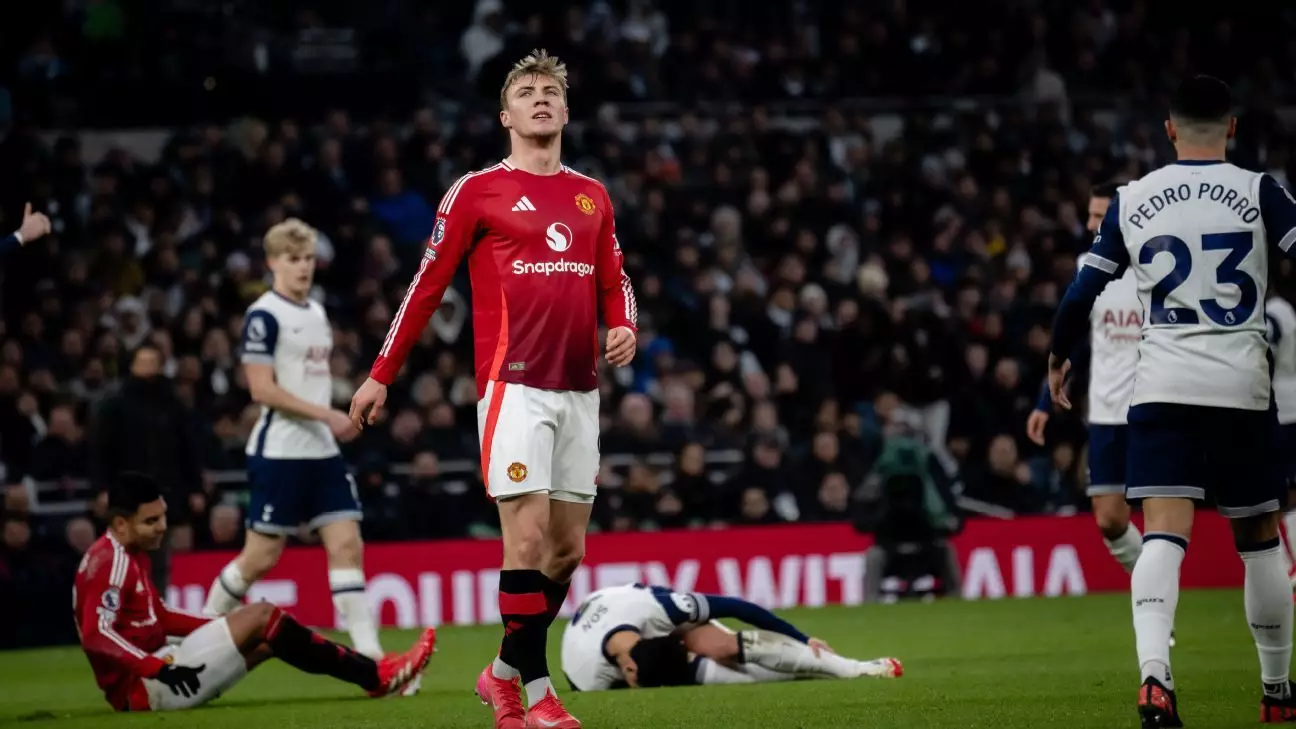In the high-stakes environment of the Premier League, goal-scoring is an activity that transcends mere statistics; it is a blend of strategy, skill, and execution. Yet, despite this pressing reality, Manchester United’s center forward, Rasmus Højlund, is at the heart of a worrying trend. The numbers reveal a stark truth: in a league filled with prolific attackers, Højlund’s shooting average is alarmingly low. This seems to act as a microcosm for the larger problems plaguing the Manchester United attack, which has struggled to find the back of the net.
It is a fundamental principle in football: if you do not take shots, you cannot score. In a league that boasts 139 players with higher shot averages than Højlund, it raises pertinent questions concerning his role as a striker. With only 1.20 shots per 90 minutes, he lags vastly behind peers such as Erling Haaland and Ollie Watkins, who showcase averages exceeding 3 shots per match. Also concerning is the fact that defenders and less attacking-minded players clock in more shots than Højlund. Could this inadequacy in shot volume be a crucial factor in Manchester United’s offensive struggles, where they have managed to score only 28 goals—among the lowest in the league?
Moreover, context matters. When one compares Højlund’s shot frequency to other center forwards, it starkly highlights an alarming discrepancy. While he barely reaches the baseline expectations of a forward, players in his role at other clubs display far more ambition and aggression in their shooting. This is not merely a reflection of personal inability; it invokes inquiries into the system and the instruction being imparted.
The tactical setup can heavily influence a striker’s performance. Rasmus Højlund’s current manager, Ruben Amorim, employs a 3-4-2-1 formation, yet the success of this system depends ideally on a forward’s capability to capitalize on opportunities. Amorim previously managed Sporting CP, where his center forward, Viktor Gyökeres, boasted an impressive 4.59 shots per game. This comparison suggests that it may not solely be the striker’s ineptitude, but potentially a misalignment between system and player role.
Further scrutiny into Højlund’s shot frequency under previous management offers no olive branch. Even during Erik ten Hag’s stewardship, Højlund recorded a mere 1.40 shots per 90 minutes. Interestingly, his most productive spell in terms of shooting came during his time at Atalanta, playing for a team that operated at a heightened tempo. This begs the question: is this a case of Højlund simply not being effective, or are managers failing to unlock his potential?
While it is tempting to point fingers solely at Højlund, football is an intricately woven tapestry involving multiple threads. The influence of surrounding players cannot be underestimated; teammates like Bruno Fernandes wield considerable impact on a central player’s opportunities. However, at some point, accountability must fall on Højlund’s shoulders. A center forward who cannot effectively position himself to shoot raises alarms about his confidence, decision-making, and commitment to exploiting scoring opportunities.
Another way to gauge a forward’s performance is by considering the role of creativity stemming from those behind him. If the service isn’t consistent or adequate, no forward will thrive irrespective of their talent. Højlund’s eventual success will rely heavily on both his individual willingness to adapt and the team’s ability to furnish him with legitimate chances.
Rasmus Højlund stands at a critical juncture in his career. At only 22, he has ample opportunity for growth and development. Acknowledgment of his shortcomings could be the first step toward redemption. Nonetheless, Manchester United must foot the bill for clarity and action. If there is no improvement in his shot volume—now incidentally linked to his goal tally—the club may face the difficult choice of whether to seek reinforcements in the player market.
Thus, the future remains uncertain. Depending on Højlund’s willingness to adapt and his coaches’ capacity to right the ship, the trajectory of Manchester United’s attacking prowess may change. Ultimately, if a striker doesn’t shoot, the haunting truth is that he certainly won’t score. In this battle, an urgent call to action is not just advisable; it may very well prove to be essential.

